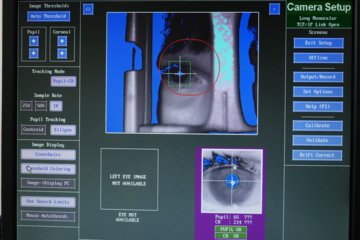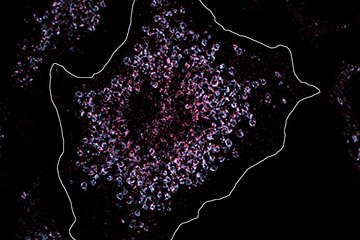Diagnosing digital disease
Essay by Johanna Rinceanu and Randall Stephenson, Max Planck
Institute for the Study of Crime, Security and Law
Hate speech, propaganda, and disinformation are increasingly presenting problems on the internet and social media. Efforts to regulate undesirable online content through platform-specific rules or legislation have been unsuccessful. Johanna Rinceanu and Randall Stephenson, senior researchers at the Max Planck Institute for the Study of Crime, Security and Law in Freiburg, believe that what is needed is a more precise diagnosis of the underlying causes. Such a legal approach should be inspired by lessons from social medicine.
What do medical diagnosis and modern-day internet regulation have in common?
The German physician Rudolf Virchow stated in 1848 that “medicine is a social science, and politics is nothing else but medicine on a large scale.” As the founder of modern pathology and social medicine, Virchow challenged emerging 19th-century trends towards biological reductionism and genetic determinism. An impassioned advocate for social reform, he maintained that, if medicine was to fulfil its great task of nurturing health and reducing disease, then society as a whole must be changed through political action. Modern medicine’s greatest idea was born.
Envisioning a medical profession that required physicians to explore complex relationships between socio-political stressors and bodily experience, Virchow regarded physicians as “the natural attorneys of the poor.” This shift in the roles and identities of doctors and lawyers was born from his deep conviction that the lessons of medical science must be applied to the organization and structure of society’s laws and regulations. Given this portrayal, if physicians were society’s “natural attorneys” and politicians its “natural anthropologists,” then lawyers might be best understood as its “natural diagnosticians.”
Following radical 20th-century breakthroughs in theoretical physics, this shift in scientific perspective precipitated the American psychiatrist George Engel’s innovative biopsychosocial model of health and illness in 1960. In Engel’s view, the medical profession was in crisis because of its adherence to an outdated biomedical model that was no longer fit for its scientific tasks and social responsibilities. In its place, Engel argued for a new paradigm that would employ a more dynamic, holistic approach. Like Virchow before him, Engel yearned for an epistemological shift in medical science focused on greater interaction between biological, psychological, and social factors. Socio-political influences were again attributed vital causal and diagnostic importance.
This short review of systems-inspired research paradigms is arguably more important than ever in our 21st-century media environment. An illustrative example is Elon Musk’s acquisition of the social networking platform Twitter for the sum of USD 44 billion. With his stated intention to redress increasing threats to freedom of expression and freedom of the press, Musk quickly learned of the underlying nature and dysfunctions of our modern digital media landscape. Twitter – like other social media platforms such as Facebook, YouTube, and Instagram – has been increasingly susceptible to alarming online content, including hate speech, image-based harassment, racism, right-wing extremism, propaganda, disinformation, and fake news.
Despite numerous state and platform-specific regulatory efforts, hate speech, online violence, and fake news are seemingly unstoppable.
Though the officially stated reason for Musk’s attempt to walk away from the deal was misrepresentations concerning the number of fake Twitter accounts, it is important to emphasize that well-intentioned efforts to safeguard press freedom and human rights norms are increasingly frustrated by rising regulatory challenges – be it in the form of regulatory norms or self-imposed social media communication rules. The latter are unique to our networked public sphere and include community guidelines for prohibiting certain online content, such as threats of violence, hate speech, the targeting of private individuals, and support or praise of terrorism, organized crime, and hate groups. Breaches of self-imposed communication rules and guidelines normally result in the removal or blocking of the corresponding content by the social media platform itself. Yet, despite numerous state and platform-specific regulatory efforts, hate speech, online violence, and fake news are seemingly unstoppable.

One explanation for the failure of online media regulation could be that a mix of international, supranational, and domestic regulations have not treated hate speech, right-wing extremism, or fake news as “symptoms” of an underlying disease, but rather as separate, specific ailments. As typified by the newly passed EU Digital Services Act – which aims to harmonize domestic laws in the European Union that regulate illegal online content – the primary outcome of this reductionist approach is a fragmented and ultimately ineffective strategy. As with Virchow and Engel in their own times, our modern public sphere is a uniquely self-referential and self-stabilizing system that requires concentrated and coordinated responses from its physician-attorneys, politician-anthropologists, and lawyer-diagnosticians.
Virchow’s pioneering understanding of the complementarity between physicians and attorneys is further supported by remarkable synergies between functionalism – comparative law’s dominant methodology – and the practice of medical diagnosis. The problems facing comparative law have increased in importance due to the global reach of digital communications technology and online media regulation. For example, the world’s first online regulatory framework – Germany’s NetzDG, which requires social media platforms to identify and remove illegal online content – has been hastily transplanted into jurisdictions with fundamentally different and potentially incompatible constitutional contexts. Countries like Belarus, Ethiopia, India, Kenya, Malaysia, Philippines, and Russia have adapted Germany’s legislative approach by requiring social media platforms to delete or block “unlawful” political content within unreasonably short deadlines with little reflection on jurisdictional differences. Those failing to comply are subject to exorbitant fines. Such reactionary internet regulation poses an increasing threat to freedoms of conscience, religion, and expression and forces private social media platforms into the unwanted role of internet gatekeepers at the threshold of human rights – a role better performed by lawyers.
The purpose of diagnosis is not to attain “certainty,” but to reduce the level of uncertainty to a degree that will allow timely and effective therapeutic intervention.
Functionalist comparative law methods might one day mend this undesirable regulatory setting. Similar to issues of health and illness, the functionalist method aims to discover broader socio-political connections underlying outward differences in legal doctrine. Advancing from detailed descriptions of domestic legal regimes (e.g. differing hate speech regulations in Germany and America), to more theoretical “system-building” – which aims to expose hidden socio-political problems common to different countries – functionalist methods might be used to better diagnose the underlying nature of the online regulatory challenges impacting nations worldwide.
These methodological similarities can be better understood by comparing functionalism and medical diagnosis in greater depth. First, both are best understood as a continuous process of information gathering, integration, and interpretation about underlying dysfunctions, and operate under conditions of uncertainty. As with comparative law, the purpose of diagnosis is not to attain “certainty,” but to reduce the level of uncertainty to a degree that will allow timely and effective therapeutic intervention.
A second similarity involves shared approaches to exercising judgment. In medical diagnosis, this manifests as clinical reasoning which, as the clinician’s “quintessential competency,” is the cognitive process necessary for properly evaluating and managing patients’ medical problems. Likewise, functionalism involves a self-reflexive process whose primary objective is to expose shared regulatory aims concealed by variations in legal doctrine. Similar to diagnostic methods, this process involves: first, obtaining data on domestic legal systems and their institutional contexts; second, evaluating differences and similarities between domestic legal regimes; and third, updating working hypotheses endeavoring to recast legal differences through the lens of shared regulatory objectives. Once this process has advanced enough to reduce uncertainty in our leading hypothesis, law reforms can be proposed to restore balance to the dysfunctional network with which the original “legal” problem most natively interacts.
As in the field of diagnostics, the ultimate success of functionalism depends on optimizing our understanding of “medical” and “legal” phenomena by shifting our evaluative focus to systems and broader contextual thinking. Whether engaging in medical diagnosis or functionalist “system-building,” this requires the physician-attorney and lawyer-diagnostician to replace overly reductionist methods by constructing “total pictures” and tracking complex causal interrelationships and their impacts on individuals and broader social systems.
What lessons can be learned from comparing medical diagnosis with internet regulation?
First, rather than seeking inflexible legal rules and principles, comparative law methods should be adapted to formulate a more flexible framework that exposes the underlying reality of today’s digital media challenges. Given each nation’s unique institutional and media context, efforts to “harmonize” and “universalize” regulations through legal translation or legal transplantation should be discouraged. Such regulatory approaches might be manipulated by non-democratic states and, without appropriate constitutional and legal safeguards, could easily foster state propaganda and online censorship.
Second, online regulators ought to eschew rigidly categorized, overly-reductionist approaches. One such example is insisting upon an internationally recognized definition of hate speech that applies equally to all jurisdictions. Emergent metadisciplines such as media ecology can better inform our regulatory efforts by exposing the permanent connections and interdependence of complex phenomena such as hate speech and online violence. By revealing their underlying structure and dynamics, we are better positioned to distinguish between symptoms and root causes, thereby enhancing the accuracy and effectiveness of our diagnostic efforts and regulatory interventions.
We need a “netiquette” of tolerance, pluralism, equality, and respect for diversity, in conjunction with inter-group dialog, counter-speech, and human-rights oriented education
Lastly, borrowing a page from Rudolf Virchow himself, today’s generation of lawyer-diagnosticians must question the epistemic realities and structure of our contemporary media environment – a critical first step in diagnosing the true nature of the social ills that our global regulatory efforts ultimately aim to redress. Equally vital, a flexible, updated approach to media regulation should be accompanied by a “netiquette” of tolerance, pluralism, equality, and respect for diversity, in conjunction with inter-group dialog, counter-speech, and human-rights oriented education – none of which can be achieved without first heeding the systems-inspired lessons of our scientific forebears.
This essay is from the current issue of our MaxPlanckResearch magazine (03/2022)












